Caryn
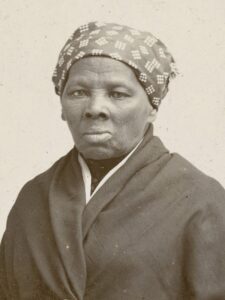
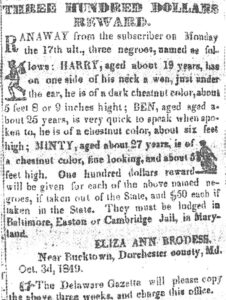 When we think of things like witness protection or a criminal hiding out, the idea is to find a way to hide in plain sight. A disguise is the first thing that might come to mind, but that is not always the case. When Harriet Tubman, who is best known today as a brave freedom fighter and abolitionist, was in the thick of the movement to free the slaves, she was faced with some particularly dangerous situations. Harriett Tubman was born Araminta “Minty” Ross to enslaved parents, Harriet (“Rit”) Green and Ben Ross in March of 1822. Rit and Ben were enslaved by different families, so it seems unlikely that they would later be able to have a child together, but Mary Pattison Brodess (and later her son Edward), who was Rit’s owner, and Anthony Thompson, who enslaved Ben, would marry, thereby connecting the two families. Thompson ran a large plantation near the Blackwater River in the Madison area of Dorchester County, Maryland. So, Harriett (Minty) was born into slavery. Like most slaves, Tubman was beaten and whipped by enslavers as a child. Those beatings resulted in a traumatic head wound when an irate overseer threw a heavy metal weight, intending to hit another slave, but hit her instead. The injury caused dizziness, pain, and spells of hypersomnia, which occurred throughout her life. The injury resulted in strange visions and vivid dreams, that lasted for the rest of her life. She ascribed to premonitions from God. These experiences, combined with her Methodist upbringing, led her to become devoutly religious.
When we think of things like witness protection or a criminal hiding out, the idea is to find a way to hide in plain sight. A disguise is the first thing that might come to mind, but that is not always the case. When Harriet Tubman, who is best known today as a brave freedom fighter and abolitionist, was in the thick of the movement to free the slaves, she was faced with some particularly dangerous situations. Harriett Tubman was born Araminta “Minty” Ross to enslaved parents, Harriet (“Rit”) Green and Ben Ross in March of 1822. Rit and Ben were enslaved by different families, so it seems unlikely that they would later be able to have a child together, but Mary Pattison Brodess (and later her son Edward), who was Rit’s owner, and Anthony Thompson, who enslaved Ben, would marry, thereby connecting the two families. Thompson ran a large plantation near the Blackwater River in the Madison area of Dorchester County, Maryland. So, Harriett (Minty) was born into slavery. Like most slaves, Tubman was beaten and whipped by enslavers as a child. Those beatings resulted in a traumatic head wound when an irate overseer threw a heavy metal weight, intending to hit another slave, but hit her instead. The injury caused dizziness, pain, and spells of hypersomnia, which occurred throughout her life. The injury resulted in strange visions and vivid dreams, that lasted for the rest of her life. She ascribed to premonitions from God. These experiences, combined with her Methodist upbringing, led her to become devoutly religious.
Tubman became an abolitionist, and started to wage a war on slavery, although she obviously waged war in a very different way than most wars are waged. In 1849, she escaped from her owners and went to Philadelphia, but it was not enough to have her freedom, she wanted her whole family free. So, she returned to Maryland to rescue her family very soon after. It was hard and dangerous work, but she slowly, one group at a time, brought relatives with her out of the state, and eventually guided dozens of other enslaved people to freedom. Tubman, also known as “Moses” traveled by night and in extreme secrecy, but as she later said she “never lost a passenger” on her route. After the Fugitive Slave Act of 1850 was passed, she helped guide escapees farther north into British North America (Canada) and helped newly freed people find work. Tubman met John Brown in 1858 and helped him plan and recruit supporters for his 1859 raid on Harpers Ferry.
Tubman, in order to stay safe, had to hide in plain sight, and as an undercover agent helping escaped enslaved people, she was known to carry chickens with her. You might be wondering why that would be. Tubman had to walk right by slavers, and those sent to recapture escaped slaves, so when she thought a slaver might be getting suspicious of her, she would release the chickens and then recapture them. I’m sure the slavers watched the commotion, but they just thought she was a slave recapturing the chickens for her owners. Little did they know how wrong they were. Simply put, the commotion was so distracting that the slave masters didn’t notice who she was! Sometimes, she would also pretend to read a newspaper, because enslaved people weren’t supposed to be able to read, so she wouldn’t be suspected! While her owners had thought she was just a “dumb slave girl” who didn’t know anything, she was actually a very smart woman, who outsmarted them all.
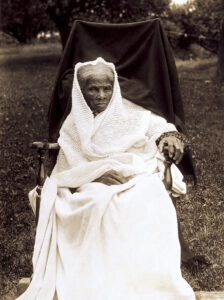
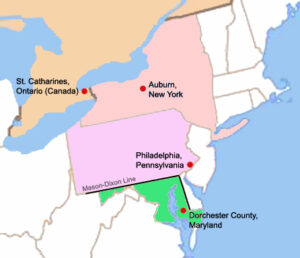
Harriett Tubman is credited with emancipating about 300 slaves…all while hiding in plain sight!! Pretty wise is you ask me. By 1911, Tubman’s body was so frail that she was admitted into the rest home named in her honor. A New York newspaper described her as “ill and penniless,” which prompted supporters to offer a new round of donations. Just before she died, she quoted the Gospel of John to those in the room, “I go away to prepare a place for you.” Tubman was buried with semi-military honors at Fort Hill Cemetery in Auburn, New York.
 My sisters, Cheryl Masterson, Caryl Reed, Alena Stevens, Allyn Hadlock, and I decided a while back to start a Sisters’ Book Club. The idea was to pick a book that we all would read, and then we would discuss the book over dinner. We decided to start our book club with books about the Presidents of the United States, and our first book was, of course, about George Washington. We decided to take turns picking the book, and I found one called “The Spiritual Journey of George Washington” and was so excited that I sort of cut in line, because I am the second sister and should have chosen the second book. Thankfully my sister Cheryl forgave my infraction of the rules among sisters and let me go first. Thanks, Cheryl.
My sisters, Cheryl Masterson, Caryl Reed, Alena Stevens, Allyn Hadlock, and I decided a while back to start a Sisters’ Book Club. The idea was to pick a book that we all would read, and then we would discuss the book over dinner. We decided to start our book club with books about the Presidents of the United States, and our first book was, of course, about George Washington. We decided to take turns picking the book, and I found one called “The Spiritual Journey of George Washington” and was so excited that I sort of cut in line, because I am the second sister and should have chosen the second book. Thankfully my sister Cheryl forgave my infraction of the rules among sisters and let me go first. Thanks, Cheryl.
This book told of so many amazing things that George Washington did. The most important thing was he Devotion to God. George and his wife, Martha set aside time every day to have Bible study and devotion. They did this as a couple…in full agreement. It was such a strong act of faith and loyalty to God. These times with the Lord truly shaped the kind of man and president George Washington. George Washington had no children of his own, but he raised the two children Martha had from her first marriage. Those children grew up to be respectable people who lived proper lives. He never shirked his duties to Martha’s children. He was a good father, and they loved him very much.
As a soldier and later a General, George Washington was totally a totally amazing “miracle man” without a doubt. He never “sent” his men into battle, he “led” his men into battle. He wasn’t sitting on the sidelines where it was “safe” but rather he was in the thick of it…so much so, that after a battle, his clothes and hat often had bullet holes in them, but he was completely unharmed!! George Washington even had two horses shot out from under him, but he was unhurt. In one of the battles he was in, an Indian warrior, who was a leader in the battle, later said, “Washington was never born to be killed by a bullet! I had seventeen fair fires at him with my rifle, and after all could not bring him to the ground!” The he went on to say, “Listen! The Great Spirit 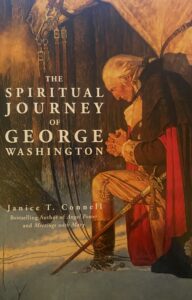 protects that man (indicating Washington) and guides his destinies…he will become the chief of nations, and a people yet unborn will hail him as the founder of a mighty empire. I am come to pay homage to the man who is the particular favorite of Heaven, and who can never die in battle.” Another Native American chief in the same battle, Red Hawk also claimed to have shot at Washington eleven times without hitting him. That must have been a terrible shock in the midst of battle, nevertheless, Red Hawk was convinced that the Great Spirit was protecting him, so he stopped firing. There are many other examples of God’s hand on the life of our beloved first President and military hero. While Washington died young by today’s standards, it did not die in battle. Rather his death was caused by a combination of a severe cold or flu, followed by an ancient practice of “bleeding the patient” and the lack of a suggested tracheotomy that likely would have saved his life. Our first meeting of the Sisters’ Book Club was a huge success, and we are moving on to a book about our second president, John Adams. Stay tuned.
protects that man (indicating Washington) and guides his destinies…he will become the chief of nations, and a people yet unborn will hail him as the founder of a mighty empire. I am come to pay homage to the man who is the particular favorite of Heaven, and who can never die in battle.” Another Native American chief in the same battle, Red Hawk also claimed to have shot at Washington eleven times without hitting him. That must have been a terrible shock in the midst of battle, nevertheless, Red Hawk was convinced that the Great Spirit was protecting him, so he stopped firing. There are many other examples of God’s hand on the life of our beloved first President and military hero. While Washington died young by today’s standards, it did not die in battle. Rather his death was caused by a combination of a severe cold or flu, followed by an ancient practice of “bleeding the patient” and the lack of a suggested tracheotomy that likely would have saved his life. Our first meeting of the Sisters’ Book Club was a huge success, and we are moving on to a book about our second president, John Adams. Stay tuned.

 While I love the beautiful snow globe scenes that bombard the internet every Winter, I also see in them, the freezing cold temperatures that must always accompany the real-life version. Some people like my sister, Cheryl Masterson and my granddaughter, Shai Royce love most of what Winter brings, snow and cold, but even they don’t like the pounding wind and sun-zero temperatures…or the terrible driving conditions that come along with them. I honestly don’t think any sane person would say they “like” the wind and sub-zero temperatures.
While I love the beautiful snow globe scenes that bombard the internet every Winter, I also see in them, the freezing cold temperatures that must always accompany the real-life version. Some people like my sister, Cheryl Masterson and my granddaughter, Shai Royce love most of what Winter brings, snow and cold, but even they don’t like the pounding wind and sun-zero temperatures…or the terrible driving conditions that come along with them. I honestly don’t think any sane person would say they “like” the wind and sub-zero temperatures.
To say that I don’t love a good snowy scene, would be a lie, so I won’t say that. I love looking at winter scenes of all kinds. From the pictures people take and post, to the snow scene “gifs” that are most prevalent at  Christmas, I love them all. Nevertheless, from my point of view, my placement in those pictures, is inside the house that is often shown, with a nice cup of hot chocolate and a warm cozy fire in the fireplace. Looking from the inside out on a Winter scene is the best place to be.
Christmas, I love them all. Nevertheless, from my point of view, my placement in those pictures, is inside the house that is often shown, with a nice cup of hot chocolate and a warm cozy fire in the fireplace. Looking from the inside out on a Winter scene is the best place to be.
I keep asking myself this year, just what it is that places me in the category of the Winter Weary, because we really have had a mild Winter. Still, that week of sub-zero temperatures, and the day of that cold wind, are enough to make me weary from day one. Then, we get our “Annual January Thaw” that comes right before that slap of Winter saying, “And….we’re back!!” that gets me every time!! These past few days of highs in the low 50° temperatures have been absolutely lovely. They would be even better, if they didn’t have to be accompanied by 30 mile per hour winds. Then, just in time for Groundhog Day, the temperatures are going to begin the decent into the 30° range again. Just Yucky!
I admit it, I am a Summer person!! That is my happy place, with Spring and Fall as close seconds, provided they don’t decide to be a snowy Spring or Fall, and that isn’t exactly the case most of the time. The way I see 
 it, Winter around here lasts about nine months, and the rest of the seasons get to split the rest of the year. I think it is just very rude to let us have that “Annual January Thaw” each year, knowing that after that week, reality will be right back, and the Winter winds, and sub-zero temperatures with look us in the face an just roar with laughter again. Nevertheless, fellow “Winter Weary” people, Spring is just 49 days away. Woo Hoo!!!
it, Winter around here lasts about nine months, and the rest of the seasons get to split the rest of the year. I think it is just very rude to let us have that “Annual January Thaw” each year, knowing that after that week, reality will be right back, and the Winter winds, and sub-zero temperatures with look us in the face an just roar with laughter again. Nevertheless, fellow “Winter Weary” people, Spring is just 49 days away. Woo Hoo!!!
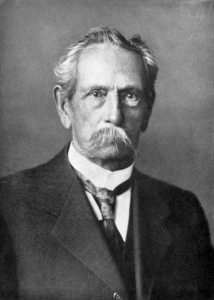
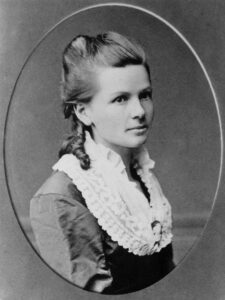 In the United States, at least, many of us equate the first car to Henry Ford, but in reality, that is not the case. In fact, the first car wasn’t built in the United States at all. Henry Ford made great strides in the automobile industry, to be sure, but he didn’t start it all. That honor goes to two European engineers, Karl Benz and Emile Levassor. Benz and Levassor created the first automobile in the 19th Century.
In the United States, at least, many of us equate the first car to Henry Ford, but in reality, that is not the case. In fact, the first car wasn’t built in the United States at all. Henry Ford made great strides in the automobile industry, to be sure, but he didn’t start it all. That honor goes to two European engineers, Karl Benz and Emile Levassor. Benz and Levassor created the first automobile in the 19th Century.
Benz patented the first automobile in 1886. It was called the Benz Patent-Motorwagen (meaning “patent motorcar”), and it was actually built in 1885 by Karl Benz. This one is widely regarded as the world’s first production automobile…meaning a self-propelled vehicle for carrying people. I suppose that at the time, the vehicle was considered expensive with an original cost of 600 imperial German marks, which equates to approximately 150 US dollars, or about $4,321 in 2020. Karl Benz applied on January 29, 1886, and the vehicle was awarded the German patent number 37435. Following official procedures, the date of the application 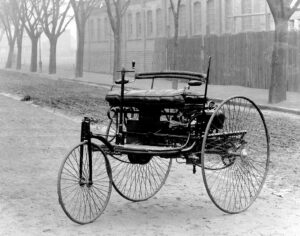 became the patent date for the invention once the patent was granted, which occurred in November of that year. Benz actually unveiled his invention to the public on July 3, 1886, on the Ringstrasse in Mannheim. About 25 Patent-Motorwagen were built between 1886 and 1893. The car is currently being maintained by Mercedes-Benz Classic.
became the patent date for the invention once the patent was granted, which occurred in November of that year. Benz actually unveiled his invention to the public on July 3, 1886, on the Ringstrasse in Mannheim. About 25 Patent-Motorwagen were built between 1886 and 1893. The car is currently being maintained by Mercedes-Benz Classic.
The “car” was really a glorified tricycle…with a motor, of course. It had three wheels that looked much like bicycle wheels. It would not be the kind of car that a person would want to ride in during the winter months. There is no top on the vehicle at all, and of course, no heat. It’s just you and the elements. Still, you could get where you were going faster, at least for that time in history. So, you didn’t have to be out in the elements as long. The car was a little primitive, but it did set a record or two. On August 5, 1888, Karl Benz wife, Bertha was the first person to drive an internal-combustion-
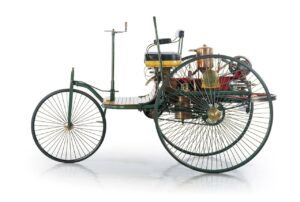 engined automobile over a long distance…about 65 miles. Long for the time, I guess. She was actually field testing the Benz Patent-Motorwagen. They were working on inventing a brake lining and solving several practical issues during the journey. The car did well, and in doing so, she brought the Patent-Motorwagen some worldwide attention and got the company its first sales. It was an amazing day.
engined automobile over a long distance…about 65 miles. Long for the time, I guess. She was actually field testing the Benz Patent-Motorwagen. They were working on inventing a brake lining and solving several practical issues during the journey. The car did well, and in doing so, she brought the Patent-Motorwagen some worldwide attention and got the company its first sales. It was an amazing day.
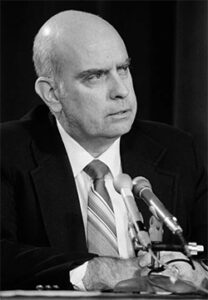
 The Space Shuttle Challenger mission, named STS-51-L, was the twenty-fifth Space Shuttle flight and the tenth flight of Challenger. The crew was announced on January 27, 1985, and was commanded by Dick Scobee. Michael Smith was assigned as the pilot, and the mission specialists were Ellison Onizuka, Judith Resnik, and Ronald McNair. The two payload specialists were Gregory Jarvis, who was assigned to conduct research for the Hughes Aircraft Company, and Christa McAuliffe, who flew as part of the Teacher in Space Project. The mission was originally scheduled for July 1985, but was delayed to November and then to January 1986. The mission was scheduled to launch on January 22, but was delayed until January 28, 1986. This was definitely a “less than ideal” situation. Delay after delay, maybe should have raised a serious red flag, but somehow, it did not. At least not to the people who could have changed the outcome.
The Space Shuttle Challenger mission, named STS-51-L, was the twenty-fifth Space Shuttle flight and the tenth flight of Challenger. The crew was announced on January 27, 1985, and was commanded by Dick Scobee. Michael Smith was assigned as the pilot, and the mission specialists were Ellison Onizuka, Judith Resnik, and Ronald McNair. The two payload specialists were Gregory Jarvis, who was assigned to conduct research for the Hughes Aircraft Company, and Christa McAuliffe, who flew as part of the Teacher in Space Project. The mission was originally scheduled for July 1985, but was delayed to November and then to January 1986. The mission was scheduled to launch on January 22, but was delayed until January 28, 1986. This was definitely a “less than ideal” situation. Delay after delay, maybe should have raised a serious red flag, but somehow, it did not. At least not to the people who could have changed the outcome.
One man…Roger Boisjoly knew that the Challenger space shuttle might fail catastrophically at any time. There may have been others I suppose, but none that chose to try to take action. Boisjoly knew that every mission was an accident waiting to happen. Knowing that, he tried to stop the launch on January 28, 1986. He had a definite sick feeling about this mission, but NASA refused to acknowledge his objections. That fact amazes me!! Boisjoly was a rocket engineer who worked for a company that NASA contracted with. He had noticed that the Challenger’s booster rockets had a major design flaw. Their elastic seals had a tendency to stiffen and unseal in cold weather. I’m sure that most of NASA simply took for granted that there would not be much cold weather in Florida. Nevertheless, on this occasion, the Challenger was scheduled for a winter launch. The time had come, and Boisjoly knew that the temperatures would be too low for the booster rocket seals to handle, even in Florida. He convinced colleagues at his engineering company to formally recommend NASA delay the launch. They did, but NASA ignored that recommendation. It was a life altering, or life ending decision on NASA’s part. Most of us know that the rest is history. The launch took place, the seals failed, and the Challenger exploded less than two minutes after it launched. That day, because of the foolish stubbornness and arrogance of NASA, seven people lost their lives. The air temperature on that January 28 was predicted to be a record-low for a Space Shuttle launch. The air temperature was forecast to drop to 18° F overnight before rising to 22° F at 6:00am and 26° F at the scheduled launch time of 9:38am. For most of us, those temperatures wouldn’t seem 
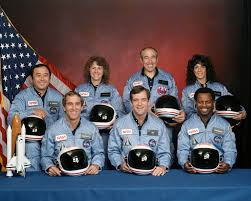 to be so severe, but for that little seal, it was very severe. Why couldn’t they have swallowed their pride, and postponed a little longer until the temperature warmed a bit. Were we really in that big a rush to start that mission, that we were willing risk the lives of seven people in the attempt. I love the space program and all that it has accomplished, but the people who made that choice that day were foolish and selfish.
to be so severe, but for that little seal, it was very severe. Why couldn’t they have swallowed their pride, and postponed a little longer until the temperature warmed a bit. Were we really in that big a rush to start that mission, that we were willing risk the lives of seven people in the attempt. I love the space program and all that it has accomplished, but the people who made that choice that day were foolish and selfish.

 My niece, Lacey Killinger has had a banner year this year. Most of this past year was spent planning for and preparing for her wedding. There were fittings, parties, a bachelorette trip to Nashville, all culminating in the wedding of her dreams on October 28, 2023. On that day, Lacey became not only a wife to Chris, but a bonus mom to her beautiful bonus kids, Brooklyn and Jaxon. Lacey truly loves those two kids. She has a kind heart and a sweet spirit, and the kids really love her for it. It was such a beautiful day, and it was so special to see her dreams come true. They immediately turned into a completed family, even though they were pretty much a family before…from the very beginning to be exact.
My niece, Lacey Killinger has had a banner year this year. Most of this past year was spent planning for and preparing for her wedding. There were fittings, parties, a bachelorette trip to Nashville, all culminating in the wedding of her dreams on October 28, 2023. On that day, Lacey became not only a wife to Chris, but a bonus mom to her beautiful bonus kids, Brooklyn and Jaxon. Lacey truly loves those two kids. She has a kind heart and a sweet spirit, and the kids really love her for it. It was such a beautiful day, and it was so special to see her dreams come true. They immediately turned into a completed family, even though they were pretty much a family before…from the very beginning to be exact. 
Over the past few years, many things in Lacey’s life have been taking an upward turn. It’s not that she was in a slump, because she wasn’t, but rather, it’s because she is receiving so many blessings from God in her life. The Bible talks about overflowing abundance and joy, and that is exactly what is going on in Lacey’s life right now. She owns her own hair salon, called LuxLou Beauty, and she specializes in hair and makeup for weddings. Business is going so well for her, that she is often booked out for months in advance. there is no better to gauge the success of a business than how busy they are.
Lacey and Chris are just perfect for each other. They are of like temperament, and they like many of the same 
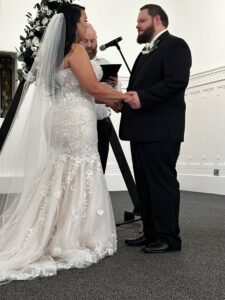 things. They are loving parents to the children, and the kids love them both so much. Their workplaces are much different, but that is to be expected, and both are exerts in their field, so they are successful at their jobs. They are both soft-spoken, and very loving people. Anyone who knows them is blessed by them. They always look forward to summer, as they love to got to the lake and hang out with the family The kids especially love going to the lake to cool off and swim. Family time is very important to the Stevens family (Lacey’s family) as a whole, and they really love to get together for various summertime gatherings, like an annual family reunion. Chris and the kids totally love going and everyone has a great time. Today is Lacey’s birthday. Happy birthday Lacey!! Have a great day!! We love you!!
things. They are loving parents to the children, and the kids love them both so much. Their workplaces are much different, but that is to be expected, and both are exerts in their field, so they are successful at their jobs. They are both soft-spoken, and very loving people. Anyone who knows them is blessed by them. They always look forward to summer, as they love to got to the lake and hang out with the family The kids especially love going to the lake to cool off and swim. Family time is very important to the Stevens family (Lacey’s family) as a whole, and they really love to get together for various summertime gatherings, like an annual family reunion. Chris and the kids totally love going and everyone has a great time. Today is Lacey’s birthday. Happy birthday Lacey!! Have a great day!! We love you!!

 My husband’s aunt, Margee Kountz practically grew up with his older siblings and him. She was born in 1949; and Bob’s sister Marlyce in 1950, Debbie in 1953, and my husband, Bob in 1954. They were followed by Jennifer in 1961, Brenda in 1963, and Ron in 1968. So, by the time she was 10, Margee was an aunt three times, and she had built in playmates. That doesn’t necessarily mean that they were always best friends, because let’s face it, kids fight…even if one of them is the aunt. She was only a year old when she became an aunt. She was only four the second time, and five the third time. That makes them more like siblings than aunt, nieces, and nephew.
My husband’s aunt, Margee Kountz practically grew up with his older siblings and him. She was born in 1949; and Bob’s sister Marlyce in 1950, Debbie in 1953, and my husband, Bob in 1954. They were followed by Jennifer in 1961, Brenda in 1963, and Ron in 1968. So, by the time she was 10, Margee was an aunt three times, and she had built in playmates. That doesn’t necessarily mean that they were always best friends, because let’s face it, kids fight…even if one of them is the aunt. She was only a year old when she became an aunt. She was only four the second time, and five the third time. That makes them more like siblings than aunt, nieces, and nephew. 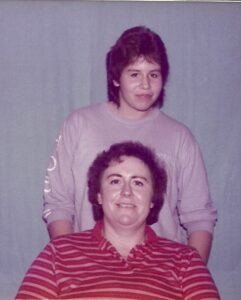
Margee has always had a sweet spirit. She is kind and helpful, and she is a giver. She gives of herself to anyone in need. Margee was a single mom for most of her children, Dan and Sandy’s lives. She worked hard to be a good mom, and when the grandchildren came along, she was a big part of their lives too. Especially after Dan’s wife, Darlene passed away when their kids were very young. I don’t know where the grandkids would have been without her. They grew up very close to their grandma. Now the great grandchildren are arriving, and I hope she will get to be as close to them as she was with her grandchildren.
Margee helped out when her oldest sister, Joann Schulenberg, my mother-in-law, had Alzheimer’s Disease, and I don’t know what I would have done without her. She was retired then, and everyone else worked. When I had to take my father-in-law to doctor’s appointments, Margee would sit with my mother-in-law, and it was a huge 
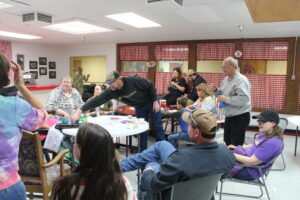 help. To try to take both of them to the doctor’s office would have been impossible. I owe her a great debt of gratitude. Her willingness to help meant more to me than words can ever express. Margee’s has been a life of service to others. She has gone above and beyond the call of duty move times than I can count, and it has not gone unnoticed. Margee is such an angel, and I am so thankful for her. Today is Margee’s 75th birthday. Happy birthday Margee!! Have a great day!! We love you!!
help. To try to take both of them to the doctor’s office would have been impossible. I owe her a great debt of gratitude. Her willingness to help meant more to me than words can ever express. Margee’s has been a life of service to others. She has gone above and beyond the call of duty move times than I can count, and it has not gone unnoticed. Margee is such an angel, and I am so thankful for her. Today is Margee’s 75th birthday. Happy birthday Margee!! Have a great day!! We love you!!
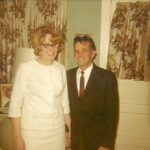
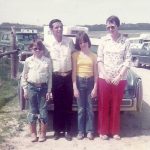 When my husband, Bob’s uncle, Bobby Cole comes to mind, I am taken back to the days when my girls, Corrie Petersen and Amy Royce, were little. Whenever we took a trip to see Bobby and Bob’s aunt, Linda Cole, we always had a great time. The girls got to play with their cousins, Sheila and Pat, and we enjoyed visiting and playing cards with Linda and Bobby. In those days, they lived in Kennebec, South Dakota. It was a tiny little town, with very little to do, so having visitors was a big deal to them.
When my husband, Bob’s uncle, Bobby Cole comes to mind, I am taken back to the days when my girls, Corrie Petersen and Amy Royce, were little. Whenever we took a trip to see Bobby and Bob’s aunt, Linda Cole, we always had a great time. The girls got to play with their cousins, Sheila and Pat, and we enjoyed visiting and playing cards with Linda and Bobby. In those days, they lived in Kennebec, South Dakota. It was a tiny little town, with very little to do, so having visitors was a big deal to them.
Linda and Bobby owned a hotel, and there were a few guests, but not really very many. It was like they owned a bed and breakfast…for us anyway. The rest of the guests had to go somewhere else for their breakfast. Bummer for them!! The visit was always so relaxing. The small-town feel was always there, and really, I loved it. I wouldn’t want to live in a small town all the time, but as an annual getaway, it was nice. I suppose it was the break from the everyday that held the majority of the appeal. We didn’t get to see Linda and Bobby much, so having the unhurried time to visit was a rare treat. They were always so full of laughter and fun.
A few years later, their hotel was struck by lightning during a summer storm, and it burned to the ground. After 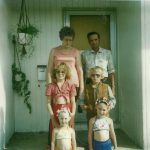
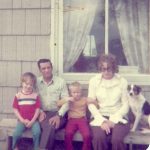 the fire, they made the decision to get out of the hotel business, and to get out of Kennebec. That was when they moved to Winnemucca, Nevada, and for the most part the annual trips stopped. Winnemucca was too far away to make it a weekend trip, like we could with Kennebec. I was always sorry to see those trips end. It was rather like the end of an era. The only thing that was more sad was when Bobby passed away, and then when Linda passed away. I will always miss them. They were a very fun couple. Today would have been Bobby’s 81st birthday. Happy birthday in Heaven, Bobby. We love and miss you very much.
the fire, they made the decision to get out of the hotel business, and to get out of Kennebec. That was when they moved to Winnemucca, Nevada, and for the most part the annual trips stopped. Winnemucca was too far away to make it a weekend trip, like we could with Kennebec. I was always sorry to see those trips end. It was rather like the end of an era. The only thing that was more sad was when Bobby passed away, and then when Linda passed away. I will always miss them. They were a very fun couple. Today would have been Bobby’s 81st birthday. Happy birthday in Heaven, Bobby. We love and miss you very much.
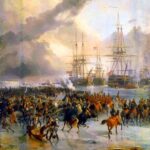
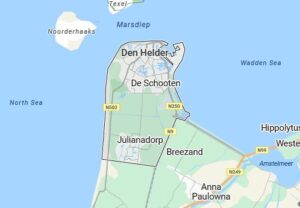 Anytime a country, engaged in a war, can capture a ship belonging to their enemy, they will find themselves strategically in a better position than before, but to capture the entire fleet…now that can mean the difference between winning and losing the war. On January 23, 1795, at Den Helder, North Holland, Netherlands, an extremely rare occurrence took place when a French Revolutionary Hussar cavalry regiment came across a Dutch fleet at anchor in the Nieuwediep, just east of the town of Den Helder. While it was not unusual to come across ships at anchor, what is extremely rare is an interaction between warships and cavalry. One being on land and one on the water, usually prevented any interaction, since the men on horses couldn’t carry guns big enough to reach the ships under normal conditions. The difference in this situation was, of course, that the Dutch fleet was frozen at anchor, not simply sitting at anchor. They had no place they could go. The men on the Dutch fleet knew that they were “sitting ducks” with no recourse, so after some of the Hussars had approached across the frozen Nieuwediep, a negotiation began. It was decided that all 14 Dutch warships would remain at anchor. It was a pretty easy negotiation, because in reality, the Dutch fleet had no other choice. They were now prisoners of war and their capture had happened without violence or even a battle. In an extremely rare even the Dutch fleet was captured by the French Revolutionary Hussars on horseback.
Anytime a country, engaged in a war, can capture a ship belonging to their enemy, they will find themselves strategically in a better position than before, but to capture the entire fleet…now that can mean the difference between winning and losing the war. On January 23, 1795, at Den Helder, North Holland, Netherlands, an extremely rare occurrence took place when a French Revolutionary Hussar cavalry regiment came across a Dutch fleet at anchor in the Nieuwediep, just east of the town of Den Helder. While it was not unusual to come across ships at anchor, what is extremely rare is an interaction between warships and cavalry. One being on land and one on the water, usually prevented any interaction, since the men on horses couldn’t carry guns big enough to reach the ships under normal conditions. The difference in this situation was, of course, that the Dutch fleet was frozen at anchor, not simply sitting at anchor. They had no place they could go. The men on the Dutch fleet knew that they were “sitting ducks” with no recourse, so after some of the Hussars had approached across the frozen Nieuwediep, a negotiation began. It was decided that all 14 Dutch warships would remain at anchor. It was a pretty easy negotiation, because in reality, the Dutch fleet had no other choice. They were now prisoners of war and their capture had happened without violence or even a battle. In an extremely rare even the Dutch fleet was captured by the French Revolutionary Hussars on horseback.
Jean-Charles Pichegru was the leader of the French units…the 8th Hussar Regiment and the Voltigeur company of the 15th Line Infantry Regiment of the French Revolutionary Army, who had been assigned to invade the Dutch Republic. The Dutch fleet was commanded by captain Hermanus Reintjes. This rare event took place during the War of the First Coalition, which was part of the French Revolutionary Wars. The little town of Den Helder is located at the tip of the North Holland peninsula, south of the island of Texel, near the shallow Zuiderzee bay (which means Southern Sea). The Zuiderzee was closed off and partly drained in the 20th century, and what is left of it now forms the freshwater IJsselmeer.
Nevertheless, in the fall of 1794, during the War of the First Coalition of the French Revolutionary Wars, the area was the site of one of the most bizarre captures in history. That day, the Dutch proclaimed the Batavian Republic, effectively ending the war with France and allying itself with France instead. Suddenly, the French were no longer enemies of the Dutch, which seems like a good move in light of the capture. Nevertheless, there were those among the Dutch Navy and the army there who remained loyal to the Stadtholder, and there were fears that Navy ships from Den Helder might sail for England to rejoin William V, Prince of Orange. For that reason, the new Batavian interim Government issued orders to all its fleets at Vlissingen, Hellevoetsluis and at Den Helder, not to fight against the French if they appeared, and to keep the ships at anchor to make sure they could be ready to defend the new Republic against the British.
This event might not have been possible, were it not for the fact that the winter of 1794–1795 was exceptionally cold, causing the Zuiderzee to freeze. Pichegru saw an opportunity and ordered General of Brigade Jan Willem de Winter to lead a squadron of the 8th Hussar Regiment to Den Helder. De Winter had been serving with the French since 1787 and would later command the Dutch fleet in the disastrous Battle of Camperdown. So, while he was successful in one operation, he might not have been the best leader in the long 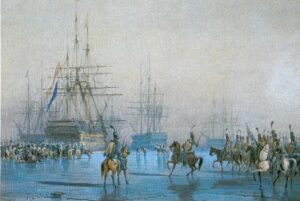
 run. Still, the operation was carried out with no casualties. The French simply received the assurance from the Dutch captain that the vessels and their crews would remain at anchor until the political situation in the Dutch Republic would have become clear. The situation was finally settled in May 1795 under the Treaty of The Hague, when the Batavian Republic officially became a French ally. Now, its ships would serve a common cause.
run. Still, the operation was carried out with no casualties. The French simply received the assurance from the Dutch captain that the vessels and their crews would remain at anchor until the political situation in the Dutch Republic would have become clear. The situation was finally settled in May 1795 under the Treaty of The Hague, when the Batavian Republic officially became a French ally. Now, its ships would serve a common cause.
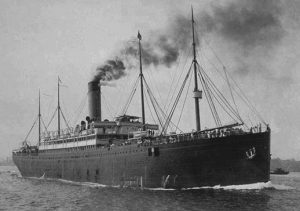 Known as the “Millionaires’ Ship” because of the number of wealthy Americans who traveled by her, RMS Republic was a “palatial liner” and the flagship of White Star Line’s Boston service. She was a steam-powered ocean liner built in 1903 by Harland and Wolff in Belfast, Northern Ireland. The ship was equipped with some of the latest technology of the time, including a new Marconi wireless telegraphy transmitter. All that new equipment would come in handy when disaster struck.
Known as the “Millionaires’ Ship” because of the number of wealthy Americans who traveled by her, RMS Republic was a “palatial liner” and the flagship of White Star Line’s Boston service. She was a steam-powered ocean liner built in 1903 by Harland and Wolff in Belfast, Northern Ireland. The ship was equipped with some of the latest technology of the time, including a new Marconi wireless telegraphy transmitter. All that new equipment would come in handy when disaster struck.
In the early morning of January 23, 1909, while sailing from New York City to Gibraltar and Mediterranean ports with 742 passengers and crew. Captain Inman Sealby was in command, when RMS Republic entered a thick fog off the island of Nantucket, Massachusetts. True to her reputation, RMS Republic was carrying a number of illustrious passengers, such as James Ross Mellon, his wife Rachel Hughey Larimer Mellon, their daughter Sarah of the Mellon banking family and family maid; Mrs Sophie Mansfield Curtis, wife of George Munson Curtis (treasurer of the International Silver Company); Mrs Mary Harriman Severance, wife of Cordenio A Severance; 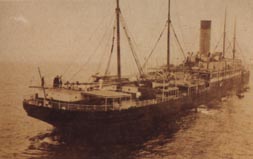 Professor John M Coulter, his wife and children; General Brayton Ives; St. Louis millionaire Samuel Cupples; historian Alice Morse Earle; and Mildred Montague, Countess Pasolini. Also, travelling in first class were Mr Leonard L. McMurray, who, in 1915, would survive the sinking of the Cunard liner Lusitania; and Mrs. Bessie Armstead Davis, daughter-in-law of senator Henry G. Davis of West Virginia with her two children.
Professor John M Coulter, his wife and children; General Brayton Ives; St. Louis millionaire Samuel Cupples; historian Alice Morse Earle; and Mildred Montague, Countess Pasolini. Also, travelling in first class were Mr Leonard L. McMurray, who, in 1915, would survive the sinking of the Cunard liner Lusitania; and Mrs. Bessie Armstead Davis, daughter-in-law of senator Henry G. Davis of West Virginia with her two children.
At 5:30am, disaster struck when RMS Republic collided with the Lloyd Italiano liner SS Florida just off Nantucket, Massachusetts. It took a while, but by about 8:40pm on January 24, 1909, RMS Republic slipped beneath the water and landed on the bottom of the ocean floor at a depth of about 250 feet. While the evacuation process was praised as flawless at the time, a total of six lives were lost, nevertheless. It has been rumored that RMS Republic was also carrying a treasure ranging from $250,000 to $3,000,000 in estimates of the value. Of course, it would likely be worth hundreds of millions of dollars, and maybe even a billion today. The SS Florida survived the collision and was later repaired.
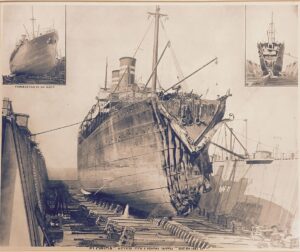
These days, the wreck is owned by father and son Martin and Grant Bayerle, and a television series entitled “Billion Dollar Wreck” is in the process of recovering the contents of the ship. Some of the contents have been recovered, yielding significant amounts of gold and artifacts and brought to the surface by an ROV built specifically for the recovery. The total value of the recovered gold was estimated at $100–150 million. Of course, that is just rumor at this point. The shipwreck itself is 250 feet under water and much of it has deteriorated. It is said that the vaults that contain the alleged treasure appear to be very much intact. Again, time will tell.

